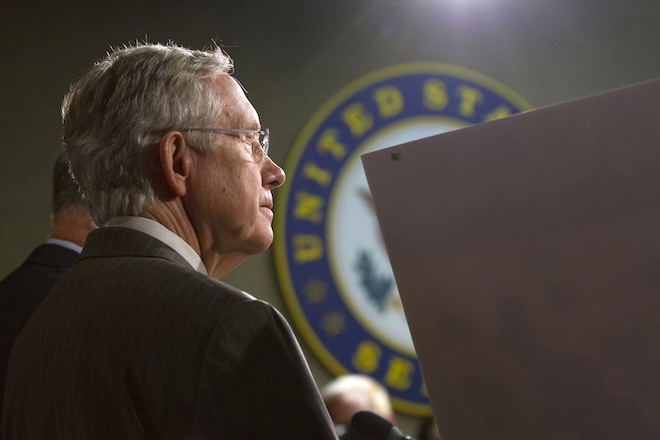A battle is quietly unfolding over the confirmation of high-profile judges and bringing the Senate closer to yet another all-out brawl over filibuster rules.
The fight involves President Barack Obama’s nominees to fill three vacant seats on the D.C. Circuit Court of Appeals, which is one notch below the Supreme Court. Democrats are determined to confirm them, and Republicans have threatened to filibuster each of them.
All three have received Judiciary Committee hearings. Attorney Patricia Millett and Georgetown law professor Nina Pillard have been approved by the panel in party-line 10-8 votes. U.S. District Judge Robert Wilkins is expected to receive a committee vote soon, and is expected to pass, again, despite unanimous Republican opposition. During Wilkins’ hearing, Senate Judiciary Ranking Member Chuck Grassley (R-IA) tried to trick him into criticizing Pillard’s views on reproductive rights.
Republicans don’t necessarily take issue with the nominees’ qualifications. They argue that the court is under-worked and none of these three seats ought to be filled; they’ve introduced legislation to shrink the number of active judges on the D.C. Circuit court from 11 to eight. Democrats have flatly rejected that proposal as a ploy to maintain the court’s conservative tilt. They say Republicans are using a flawed indicator — that although the court takes fewer cases than others, its cases are unusually complicated and that Republicans were supportive of having 11 active judges on the court during a GOP presidency.
The battles to avert a government shutdown and debt default are expected to consume Congress for most of the rest of the year. But these nominees will eventually come up in the full Senate. If Republicans follow through with their threats to filibuster and prevent them from receiving up-or-down confirmation votes, Democrats will face a choice: give up and concede defeat, or revisit filibuster reform.
After several handshake deals — in 2011 and again early in 2013 — that preserved the filibuster, Senate Majority Leader Harry Reid (D-NV) has lost his patience with unrelenting Republican obstruction. His aides say he’s prepared to scale back the blocking tactic with 51 votes — the so-called nuclear option. In July, he came within hours of eliminating the filibuster for executive branch nominees, but enough Republicans caved and gave him the votes to confirm Obama’s cabinet and agency. If Republicans filibuster these judicial nominees, it could force his hand on another rules change push.
But it won’t be easy because executive branch nominees and judicial nominees are different animals. Democrats are more inclined to get rid of the filibuster for the former — it’s not clear Reid can get the necessary 50 votes for the latter. For instance, some progressive senators worry about about surrendering their power to block a future Republican president from nominating right-wing judges. Executive nominees are temporary; judges have lifetime tenure. Despite the concerted push from progressive supporters of filibuster reform and liberal legal advocates to confirm these nominees, it’s a tough sell.
The fight looms large in Obama’s second term, during which he intends to use executive power to act where Congress is unable to. The D.C. Circuit court often has the final say over the constitutionality of executive power decisions and has invalidated various executive actions by the president on issues like labor and environmental regulations.
A third option for Democratic leaders is to negotiate an agreement with Republicans that confirms some — if not all — of the D.C. Circuit nominees. That would be less than the victory they desire but it would shift the balance of the court in their favor and avoid going nuclear.






